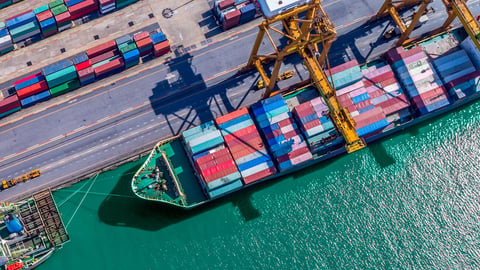A new year with a new focus in retail technology
With the arrival of 2025 comes a whole new perspective on the role of technology in retail.
The new year is upon us, and retail technology will follow a course at least partially set by some burgeoning industry developments. Here is a look at how "racing with the machine," delivery automation, and supply chain disruption are in place to have a significant impact on retail technology during 2025:
Racing with the machine
In 2025, retailers will continue realizing that AI is best employed as a “co-pilot” that enhances and expands the capabilities of a human user, rather than as a wholesale replacement for human knowledge and experience. This strategy, which has enabled teams comprised of human chess players working with computers to beat both human and computer opponents working alone, has been dubbed “racing with the machine” by MIT professor Erik Brynjolfsson.
For example, Target Corp. is rolling out a new proprietary generative AI chatbot called Store Companion that will help store associates answer customer inquiries and on-the-job process questions, coach new team members and support store operations management.
On the customer-facing side, e-commerce marketplace Curated uses an AI consumer co-pilot to connect with customers who are a little bit earlier in their buying journey. This allows them to ask questions, start their educational process, and begin to understand the terminology about products before transitioning to one of the e-tailer’s human experts. .
"Our AI is trained on over two million conversations that our consumers have had with our experts," Peter Ombres, CEO and co-founder of Curated, said in an exclusive interview with Chain Store Age. "This database of interactions helps make our AI extremely useful in the context of shopping."
Delivery automation
The volume of deliveries keeps expanding as consumers expect packages to arrive in shorter windows of time. It’s only natural that retailers will implement automated delivery technologies more than ever in 2025.
Drone technology is one of the most talked-about automated delivery solutions, and now that Amazon has received Federal Aviation Administration (FAA) permission to fly its Prime Air delivery drones beyond the visual line of sight of the pilot and Walmart is enabling select drone delivery orders directly in its app, other retailers will surely follow.
Some smaller retailers already have, such as quick service restaurant chains Panera Bread and Jet’s Pizza recently launching delivery via Zipline drones in select markets.
Sidewalk robots are also an emerging automated delivery platform, as evidenced by recent rollouts from entities including Shake Shack, Uber Eats and Grubhub. And as driverless vehicles continue evolving, expect more pilots like Uber Eats’ ongoing testing of Waymo robotaxis.
Supply chain disruption
The global supply chain has recovered from the peak disruption levels of 2020 and 2021 and continues on an uneven course of improvement, but it still does not function as smoothly as it did pre-2020.
The supply chain also remains prone to shocks from ongoing global instability and climate events, as well as strikes affecting both ports and rail service. The possibility of new tariffs being imposed on imported goods in 2025 also raises uncertainty about how the supply chain will function.
All this will lead retailers to implement solutions that can help them better predict potential disruptions, react when they happen, and generally run their supply chains more smoothly to make the inevitable impact of disruptive events less dramatic.
On the predictive side, expect more retailers to follow in the footsteps of Dick’s Sporting Goods, which utilizes Inspectorio sourcing and production technology to obtain seamless connection of traceability data with the rest of its sourcing operations, as well as automate manual processes with AI-equipped features.
[READ MORE: Dick’s Sporting Goods centralizes sourcing and production with AI]
In terms of smoother supply chain operations, retailers should consider the example of Walmart, which runs high-tech fulfillment centers featuring an automated, high-density storage and retrieval system that streamlines a manual, 12-step process down to five steps. It also offers double the storage capacity and twice the number of customer orders the discounter can fulfill in a day, expanding next- or two-day shipping.




